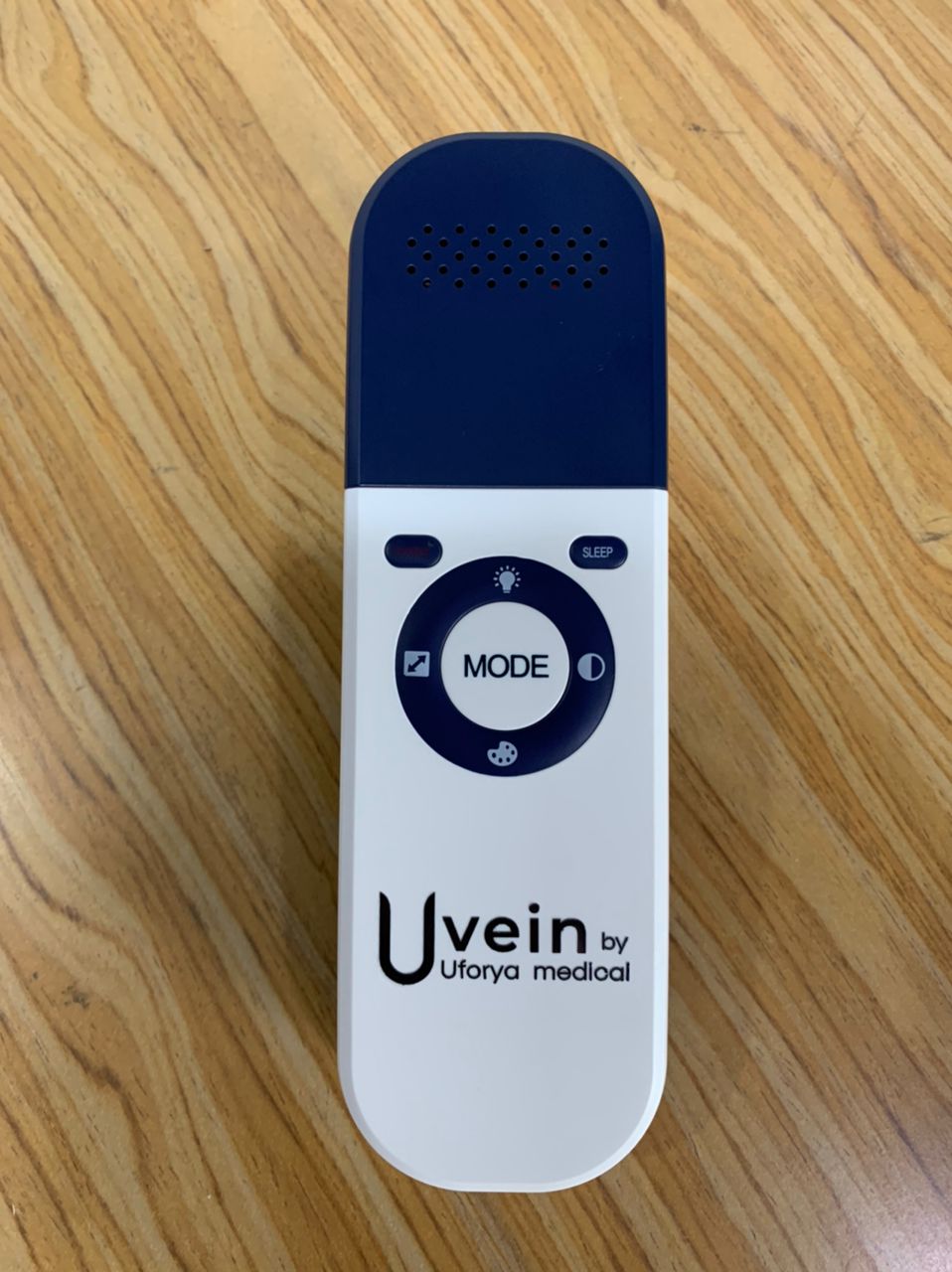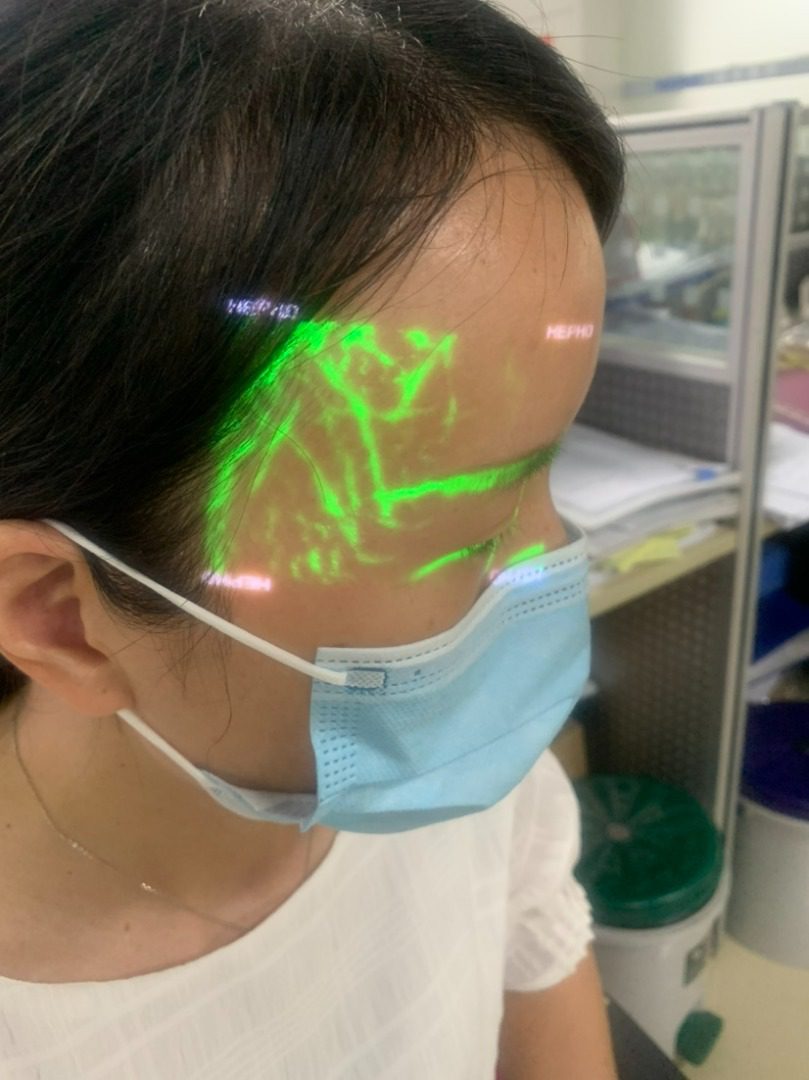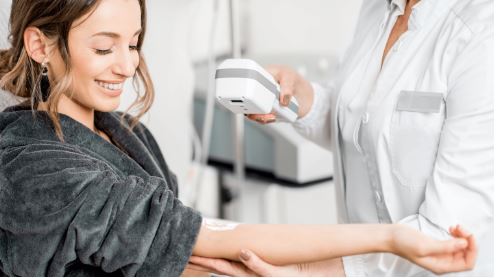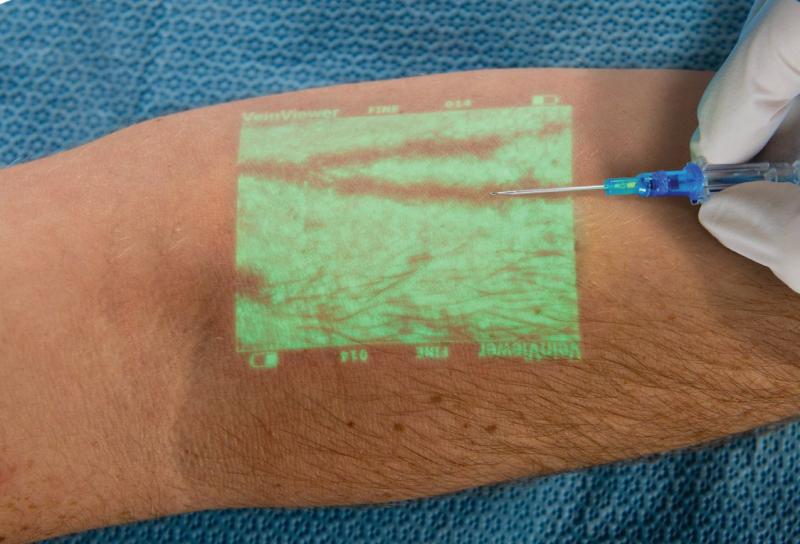A Detailed guide about Vein finder in the medical field!
Vein finders are a vital part of the medical field, used to locate veins for injections, blood draws, and other treatments. Knowing how to use a vein finder correctly is essential for providing safe and effective care for your patients. This guide will teach you all about vein finders, including how they work and how to use them effectively. Read on to learn more!
What is a Vein finder and what are its uses in the medical field ?
A vein finder is a medical device that uses infrared light to locate veins beneath the skin. It is often used by healthcare providers to help them find veins for injections, blood draws, and other treatments. Vein finders can be handheld or worn on the wrist, and they emit a beam of near-infrared light that penetrates the skin and reflects off of the underlying blood vessels. This reflected light is then captured by an optical sensor, which creates an image of the veins that can be seen on a display screen.
Vein finders are commonly used in hospitals, clinics, and doctor’s offices, but they can also be found in some pharmacies and home health care settings. They are especially useful for people with dark skin or who have difficult-to-find veins.


How does a vein finder work?
A vein finder uses near-infrared light to locate veins beneath the skin. The light penetrates the skin and reflects off of the underlying blood vessels. This reflected light is then captured by an optical sensor, which creates an image of the veins that can be seen on a display screen.
Vein finders are most effective when used on areas of the body with little body fat, such as the arms, hands, and feet. They may not be as effective on people with dark skin or those who have a lot of body fat.
When is a vein finder highly required?
A vein finder is an essential instrument for any medical worker that conducts venipuncture for blood withdrawal or intravenous infusions.
Vein finders are essential for a variety of medical professional operations, including IV access by a frontline healthcare professional, blood specimen collection by a phlebotomist, and hospital-based medical professionals – a vein finder of high quality is an important must for all.


A vein finder serves two primary tasks that are requirements for all operations that involve insertion of a needle into a vein. This might include anything from obtaining a blood sample to a full-scale operation. The size of the needle will be determined solely by the veins.
A vein finder often identifies the vein location and makes it accessible to the medical practitioner in real time on the patient’s administration site. With the assistance of a vein finder, physicians and nurses may simply insert intravenous catheters and provide parenteral medications.
Blood sample collection — the vein finder would allow a phlebotomist to easily discover the vein, reduce pre-analytical mistake, and prevent patient pain.
Cannulation — It is a hard procedure because to the inherent problems involved. Locating a vein can be difficult if a patient is dehydrated, obese, has hypotension, the vein site has been used for drugs, there is a skin rash on the site, the person performing the procedure is inexperienced, and for many other reasons – a vein finder can do wonders to facilitate cannulation and increase the success rate of first-time needle insertion.
A vein finder is mainly required to discover blood veins and will not play a part when real needle manipulation is required.
The different types of vein finders available on the market?
There are a few different types of vein finders that are available on the market. The most common type is the infrared vein finder. This type of device uses an infrared light to illuminate the veins beneath the skin.
Another type of vein finder is the laser vein finder. This type of device uses a low-power laser to create a three-dimensional image of the veins beneath the skin.
Finally, there is the ultrasound vein finder. This type of device uses sound waves to create an image of the veins beneath the skin.
The benefits of using a vein finder in the medical field:
Vein finders have become increasingly popular in the medical field over the past few years. There are many benefits to using a vein finder, including:
- They help improve accuracy when taking blood samples or inserting IVs.
- They can help save time, as veins can be located quickly and easily.
- They can reduce pain and discomfort for patients, as needles can be inserted into veins more accurately.
- They may help to reduce the number of complications associated with taking blood samples or inserting IVs.
- They can be used on patients of all ages, including infants and children.
- They are easy to use and can be operated by anyone who has been trained to do so.
- They are relatively inexpensive and are often covered by insurance plans.
There are a few things to keep in mind when using a vein finder, such as:
- Vein finders should only be used on patients who are able to understand and follow instructions.
- Vein finders should not be used on patients who are pregnant or have heart conditions.
- Vein finders should be used with caution on patients who have diabetes or other medical conditions that may affect their ability to heal properly.
- Vein finders should be sterilized before each use.
- Patients should be instructed on how to use the vein finder properly before it is used on them.
If you are considering using a vein finder in your medical practice, be sure to weigh the pros and cons carefully to ensure that it is the right decision for you and your patients
How is Vein finder produced by Uforya Medical beating the competition in market!
Uforya Medical’s near-infrared vein finders, sold under the brand name Uvein, are designed to improve the capacity of medical workers to discover veins.
Using the method of near-infrared light reflection, Vein Finders create a map of the veins under the skin. Due to its portability and long battery life, Uvein Vein detectors may be used inside and outside of medical institutions. Other Vein finders available on the market are less suitable and have a short battery life that is difficult to manage, however Uvein eliminates these concerns.
Using a vein finder makes it considerably simpler for nurses and other medical staff to insert IV cannulas and perform other venipuncture procedures.
Follow this link to buy Uvein if you are interested in obtaining the best Vein finder that is currently available on the market at the most affordable price: https://uforya-medical.com/product-tag/vein-finder/


Why nurses who cant find veins should use Vein finder?
There are a few reasons why nurses who have difficulty finding veins should use a Vein Finder. First, it can be very difficult to find veins, especially if the patient is dehydrated or has dark skin. Second, even when veins are visible, they can be difficult to access. Third, vein finders help to ensure that the needle is inserted into the vein in the correct place, which can minimize pain and bruising. Finally, using a Vein Finder can help to improve the success rate of IV insertion, which is beneficial for both the patient and the nurse.
Some common myths about vein finders busted!
There are a few common myths about vein finders that need to be debunked.
First, some people believe that vein finders are only for those with dark skin. This is simply not true – vein finders can be used on all skin tones.
Second, some believe that vein finders are only for those who have difficulty finding veins. However, even nurses who have no trouble finding veins can benefit from using a Vein Finder.
Finally, there is a common misconception that vein finders are painful. In reality, most Vein Finders use infrared light to locate veins, which is completely painless.
Finders use infrared light to locate veins, which is completely painless.
Conclusion:
As we can see, the vein finder is a very useful tool in the medical field! It helps doctors and nurses to find veins quickly and easily, which can save lives! If you are interested in learning more about this amazing tool, then be sure to check out our other articles on the subject. Thanks for reading!


